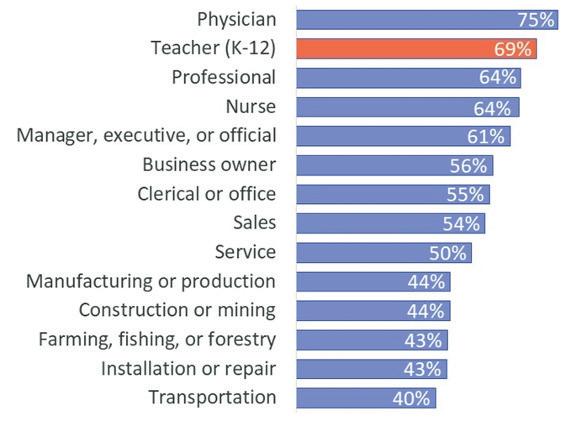Preparing for Your Future
English Language Learners and You Dr. Gina Blackburn Professor of Education, Grove City College, Pennsylvania
A
classroom full of students with diverse experiences can be intimidating to a new teacher. Add to the mix a handful of students who are still learning to speak English, and it can be downright terrifying! You’ve got this though! You can be there for your ELLs if you just remember a few important best practices. Academic Language versus Social Language Sometimes teachers over-estimate a student’s language development because they sound like a native speaker. To learn to speak fluently, it is estimated by the Interagency Language Roundtable to take about 900 hours of instructional time (2012). So, if a student is taking two hours of ESL class a day for three years, they will sound fairly proficient. However, it takes 5-7 years to achieve academic language fluency. Consequently, when you chat with a student, they seem just fine with their English development, but in reality they still need scaffolds and extra instruction in their academic use of English. Leveraging their First Language Students who are early in their English development are more successful when teachers allow them to use their L1 (first language) in the classroom. Teachers can do this by giving students key terms and directions in the student’s L1. For young students (ages 3-8), it is helpful to say the key terms or directions in the student’s L1 because the student may not be literate in their first language.
Reduce Language Load Because ELLs need more time to translate back and forth, we also need to reduce their language load. If you are a regular education teacher, your focus will be two-fold for your ELLs: Keeping them progressing in your content area and helping them to continue developing their academic English for your content area. You can help them achieve in your content area by giving them sentence frames to use to share their thinking. For example, in a math class, you might give them the sentence frame, “I solved this equation by_______.” Then have them read their sentence frame to you to practice using that language. Also, make sure your directions and any reading they have in your class has simplified language. Practice simplifying English for your ELLs on any handouts you are giving them. Working with your ELLs may add a little extra work to your plate, but it will be well worth it. You will potentially meet interesting people from all over the world, and it will enrich your entire teaching experience! References: Interagency Language Roundtable. (2012). ILR Speaking Skill Scale. https:// www.govtilr.org/Skills/IRL%20Scale%20History.htm
Visuals, Visuals, Visuals Additionally, students who are in the beginning stages of speaking English need many visuals to make sense of the lesson. Demonstrating the task that they are about to accomplish can help. It is also important to list each step in the directions, going over them verbally while giving it to them visually. Videos using subtitles in their L1 can be helpful for older ELLs who have literacy in their L1. Books with illustrations allow ELLs to get a sense of what is happening in fiction and nonfiction. Teaching with supplemental resources such as manipulatives and realia (items from the real world) allow students to put the content in their hands, helping them to connect the lesson to their lives outside of school. When you have ELLs in your classroom, visuals should be at the forefront of your mind as you write your daily lessons.
Join KDP Gain the inspiration and tools you need to successfully navigate your teaching career.
Time
28
Remember that ELLs need more time than their nativespeaking peers. When you ask a question, they are translating the question to their L1, then thinking about an answer, and then translating that answer into English from their L1. Even students who have been redesignated out of the ELL classroom still translate back and forth. Remember this and give them more time to respond to your questions and to do an assignment. It may even be necessary to give them fewer problems or questions on an assignment. For example, when I taught high school English, I might have an ELL respond to a prompt in one paragraph, instead of the three paragraphs my native speakers were writing. I could still get a sense of the student’s understanding with one paragraph. American Association for Employment in Education
Learn more at www.kdp.org































